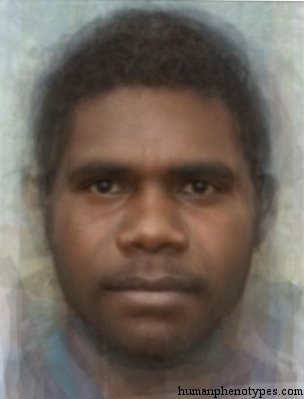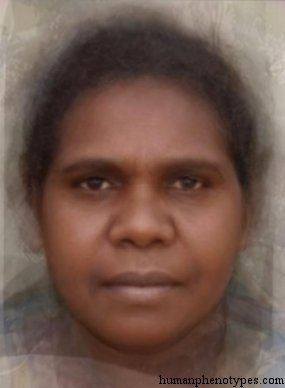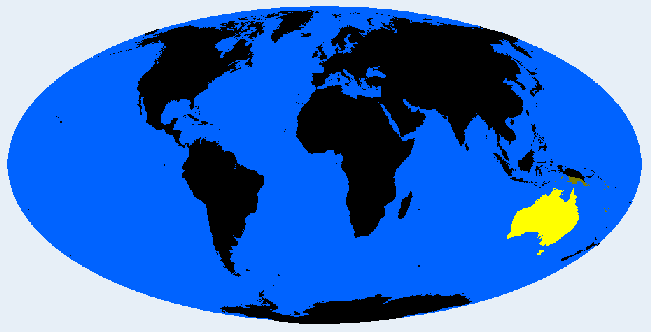Description:
Phenotype group typical for native Australian people. Probably split off from one of the early Out-of-Africa migrations before the divergence of Europeans and East Asians. Migrated to Australia via a South Asian route. Often shows a variety of ancient features. Superciliary arches strong, prognathy, long skulls, receding chin and foreheads. Long-legged, slender, skin medium brown to black, hair wavy to curly, noses very wide. Body hair stronger than in Sub-Saharan Africans. The North Australid variety is high-skulled, taller, darker, and more slender, the South Australid low-skulled, more thickset, and fairer-skinned. In the Western Desert exists a short-faced, lighter-haired Desert Australid variety. Until the 20th century a pygmoid Barrinean variety was found in the forests. The kinky-haired Tasmanid was native to Tasmania. European colonisation practically wiped out all of them except North Australids and Desert Australids.Names:
Australid (Eickstedt, 1952; Vogel, 1974; Lundman, 1967 , 1988 ; Knussmann, 1996), Australian (Hooton, 1946; Cheboksarov, 1951; Debets, 1974; Alexeev, 1979), Australienne (Montandon, 1933; Vallois, 1968), Australidi (Biasutti, 1967), Australian Aborigines (Cole, 1965), Homo Australasicus (Bory, 1827).




